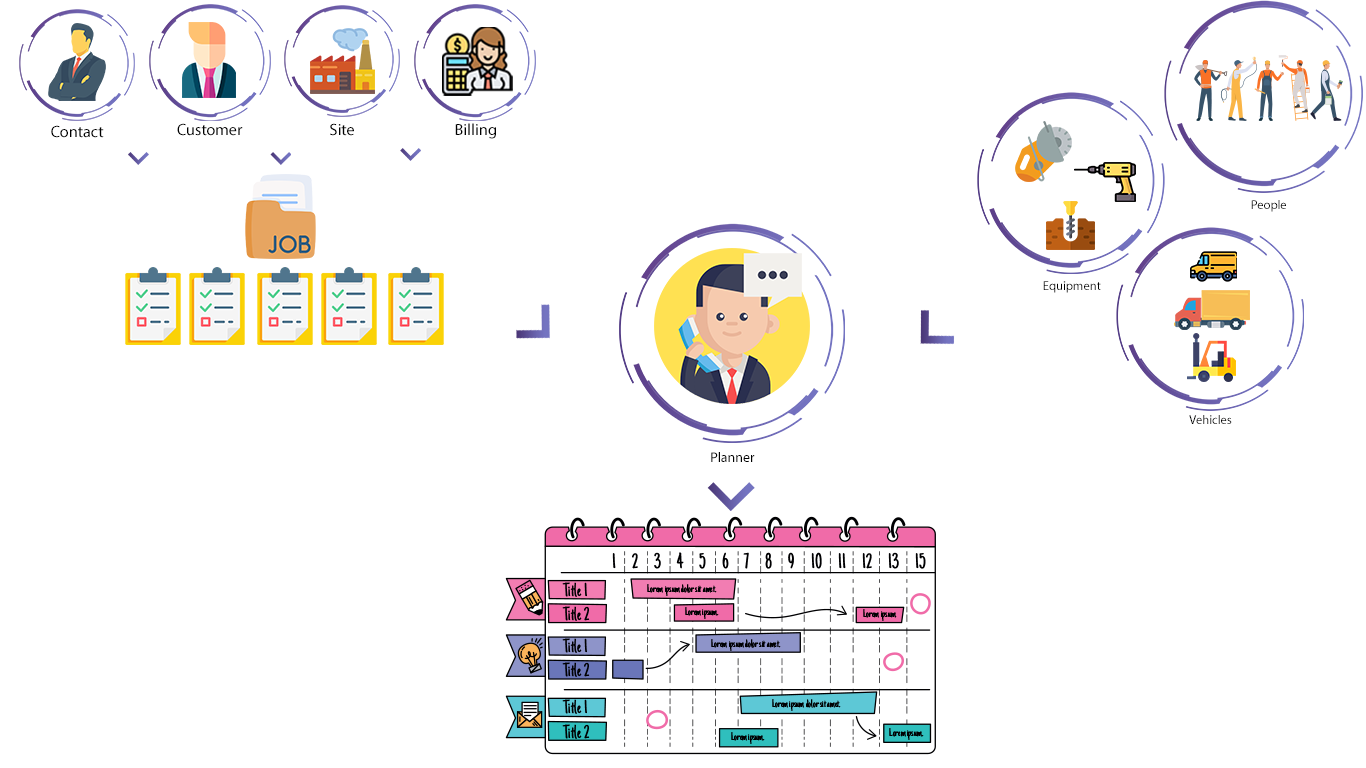User Manual
In the blurb on our website, two basic yet very important concepts are mentioned in the very first sentence:
Dime.Scheduler is a graphical planning and scheduling tool that can plan any type of resource on any type of task. [...]
Any way you slice it, planning is just a basic management function that is concerned about the decisions on what needs to be done, when it needs to be completed and who is going to do it.

Converging these three aspects is all what Dime.Scheduler is about. In Dime.Scheduler jargon, the "who" corresponds to a "resource" whereas the "what" refers to a "task". The third aspect is only relevant when a resource is assigned to a task: it indicates the date when the resource will carry out the task. As simple as it sounds, planning is not easy. The human species is notoriously bad at planning, as several studies have shown. Luckily, Dime.Scheduler is there to let humans make those mistakes and rectify them where needed.
Resources
A resource is a general term for people and equipment: people are assigned to perform certain tasks and equipment is assigned to allow people to perform the tasks assigned to them.
Here are some examples of people as resources:
- Service technicians
- Sales persons
- Helpdesk employees
- Consultants
- ... and many more
And here are some examples of equipment as resources:
- Machinery
- Tools
- Replacement vehicles
- Hotel rooms
- Office and exhibition material
- ... and many more
In other words: a resource can be anything.
Tasks
Tasks are actions that need to be carried out, which can vary from a simple phone call to a maintenance job to a large machinery installation or even the construction of a large building that spans several days or months. What a task entails and how detailed it is, entirely depends on the business you're in and how you conduct your business. As long as it makes sense for you, it makes sense for Dime.Scheduler too.
In other words: a task can be anything.
Create a plan
You have entered the realm of planning when you find yourself consistently matching tasks with resources. This is the cue for Dime.Scheduler to come into play: with data that is (optionally) fed from a ERP, CRM or any kind of LoB system, Dime.Scheduler offers a graphical extension to those systems to allow you to plan efficiently and effectively.
This implies Dime.Scheduler is not a standalone solution. Instead, it simply taps into the existing digital ecosystem and adds the missing capabilities to the planning process. Here is a non-exhaustive list of some of the gaps Dime.Scheduler bridges:
- Drag & drop planning
- Assign tasks to multiple resources
- Grouping, sorting & filtering
- Project planning with Gantt Charts: milestones, deadlines, dependencies and constraints
- Multiple alternative or replacement planning boards and project plans
- Smart resource filtering with filter groups
- Integrated multi-point geo-mapping with travel time and distance calculation
- Easy user interface personalization
- Task color, time marker and priority based on task data
- Alerts and notifications based on business rules in backend
- User access restriction based on task data, user role or user group
- Data-driven setup and security
- Multi-language support
- Multi-database support
- Large data set support
- Custom fields/entities support
- Real-time visualization of GPS-tracked resources
- Synchronization with Microsoft Exchange
Dime.Scheduler is an add-on
Another intrinsic property of Dime.Scheduler is its means to add capabilities to business software such as ERP and CRM systems. Even though it can be used as a stand-alone solution, Dime.Scheduler really shines when it is used in conjunction with other systems, which is why Dime.Scheduler classifies as a horizontal add-on.
What's next
This section provided a very high-level description of the business case that Dime.Scheduler aims to address. Of course, there is much more to it, which is the scope of the following sections.